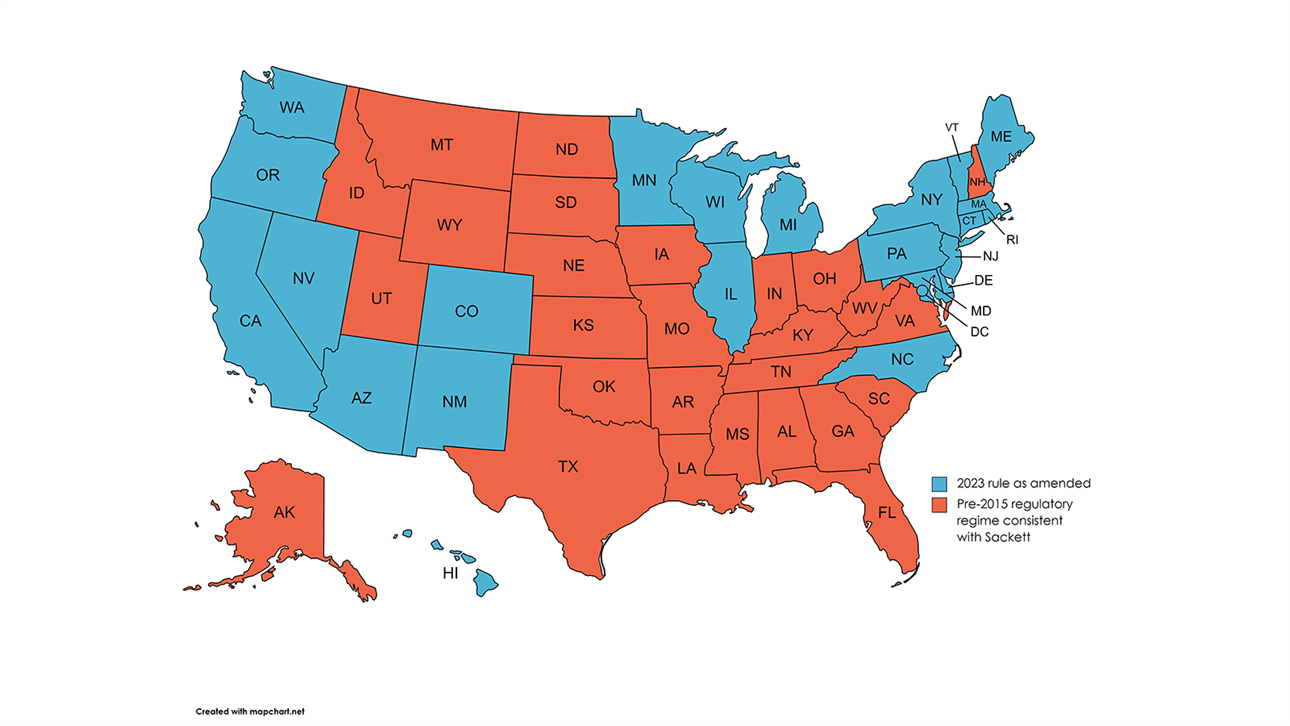New WOTUS Rule Further Muddies the Waters
Note: The final rule was published in the Federal Register on Sept. 8. NAHB will continue to provide updates as more information becomes available.
The Environmental Protection Agency and U.S. Army Corps of Engineers have issued an amended final waters of the United States (WOTUS) rule in the aftermath of the recent U.S. Supreme Court decision in the case of Sackett v. EPA.
Unfortunately, the revised WOTUS rule — which was made with no public input from interested stakeholders — represents a blow to housing affordability.
The Supreme Court’s Sackett decision made clear the federal government only has authority over relatively permanent waterbodies. But the Biden administration failed to provide a definition of a “relatively permanent” waterbody. Furthermore, the revised WOTUS rule fails to exclude from federal jurisdiction all “ephemeral features,” which only possess water following a rainfall event.
This uncertainty regarding what waters are subject to federal jurisdiction sets the stage for continued federal overreach, bureaucratic delays during the wetlands permitting process, and regulatory confusion for home builders and land developers.
Immediately after the rule was issued on Aug. 29, NAHB Chairman Alicia Huey issued an official statement saying the new regulation “will directly result in continued regulatory barriers to affordable housing as single-family and multifamily developers struggle to find the developable land necessary to produce the new affordable housing units this nation desperately needs.”
In short, the new WOTUS rule is a missed opportunity to provide regulatory certainty to the home building industry.

One Rule for 23 States; Another Rule for 27 States
Making matters even more confusing, several federal district courts had already issued a preliminary injunction against the Biden WOTUS rule released in January, which now prevents the agencies from implementing the recent WOTUS amendments issued on Aug. 29. This means the revised WOTUS definition will only apply in 23 states, the District of Columbia and the U.S. Territories.
In the other 27 states, the agencies are implementing the pre-2015 regulatory regime and the Sackett decision until further notice. The end effect is additional regulatory uncertainty, with our members having to comply with two different rules.
NAHB is proactively participating in the litigation in 27 states to encourage the agencies to, among other things, define a clear definition of a relatively permanent waterbody to provide regulatory certainty to the home building industry.
Meanwhile, NAHB will continue to meet with EPA and U.S. Army Corps of Engineer officials to seek further clarity regarding the newly enacted WOTUS rule for the other 23 states. We will urge the agencies to expedite approvals for jurisdictional determinations and Clean Water Act 404 permits based on an approved jurisdictional determination.
The agencies have indicated they will hold stakeholder hearings on the new rule in the near future. The agencies announced a public webinar on Sept. 12, but it is already at capacity. NAHB has requested the agencies to accommodate more industry stakeholders and the regulated public. Additionally, NAHB has requested a standalone meeting with the agencies to brief our nation’s home builders and land developers on the amended rule.
We will also continue to meet with federal officials to air our concerns with the new rule, offer pragmatic changes that maintain environmental protection of our nation’s waterways, and restore common sense and predictability to the federal wetlands permitting process.
View NAHB’s WOTUS page, where additional information will be posted on the content of this new rulemaking.
